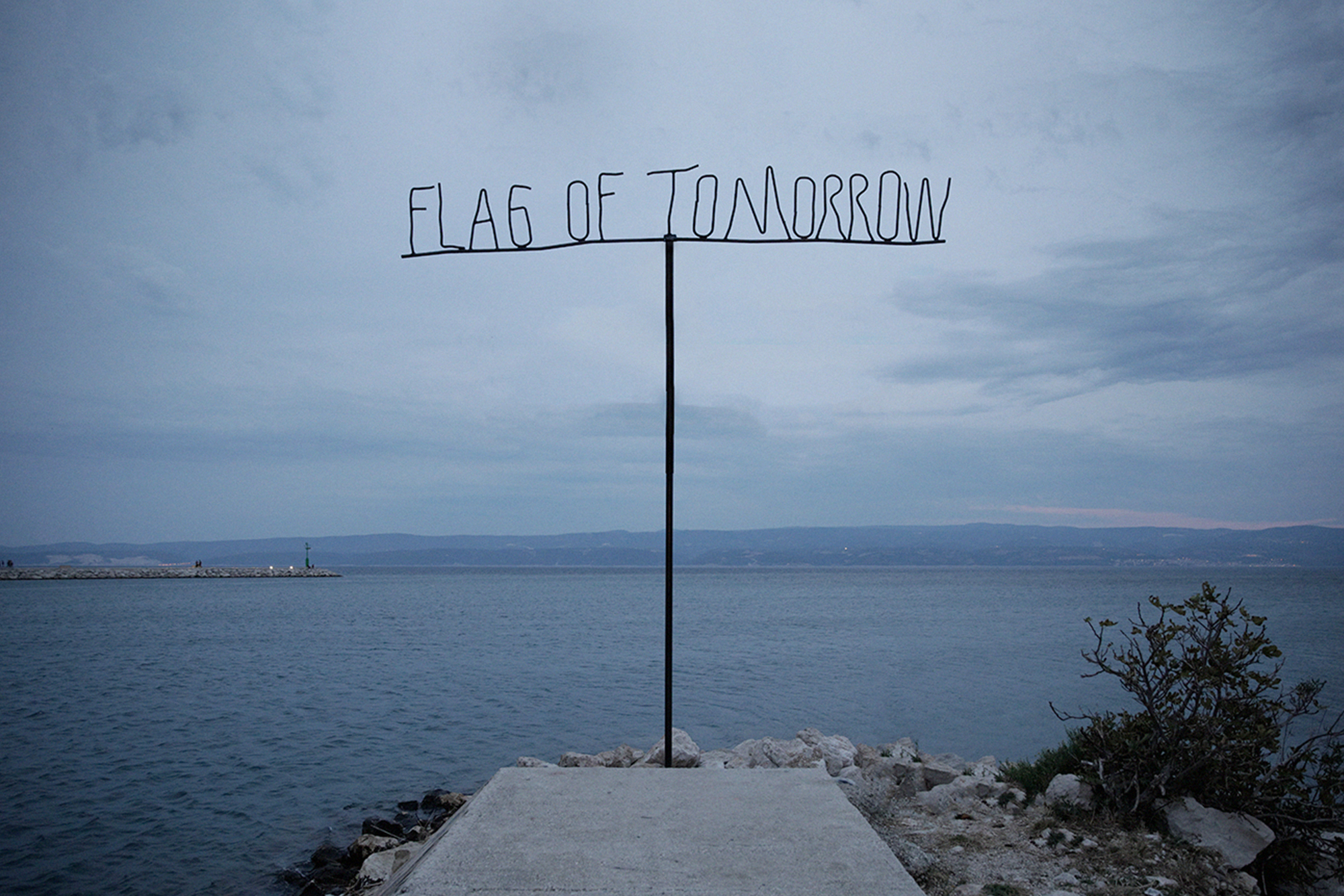The artwork, aptly titled the "Flag of Tomorrow," serves as a captivating totem that engages in a mesmerizing dance around its axis, guided by the winds blowing from the Adriatic Sea. Its movement is not merely aesthetic but symbolic, embodying a profound metaphorical journey into the heart of contemporary society.
In this pivotal moment in human history, the "Flag of Tomorrow" emerges as a tangible gateway, inviting viewers to delve deep into the inner workings of our modern trajectories. It stands as a beacon, illuminating the critical juncture at which we find ourselves, urging introspection and contemplation.
This literal flag, with its fluttering presence, becomes more than just a symbol of national pride; it morphs into a monument, a solemn remnant of today's hubris and a solemn marker of the uncertainties of tomorrow. Inspired by the evocative imagery of Pieter Bruegel's painting, "The Triumph of Death" (1562-1563), the artwork carries echoes of historical turmoil and existential questioning.
Through its creation, the artist crafts an altar dedicated to the current state of exception, a
sacred space where observers can engage in a pilgrimage of introspection. It beckons us to
confront the perpetual query: Where are we headed? In its fluttering, we find a profound meditation on the fragility of existence, the inevitability of change, and the enduring quest for meaning amidst the tumult of contemporary life.
Neli Ružić – curator of Almissa Open Art Festival 112
1 Benjamin, Walter, Essays, Nolit Belgrade, 1974, p. 83
2 Le Clézio, Jean-Marie Gustave in Deleuze & Guattary, What is philosophy?, Sandorf & Mizantrop, Zagreb, 2017. p. 134.
3 From the statement of the author ANA Elizabeth
4 From the statement of the author Božena Končić Badurin
5 Rancière, Jacques. Politics of time, A new look at modernity, Sves - ka no. 6, place of publication and year p. 7
6 Rancière, Jacques, 2004, The Politics of Aesthetics, Distribution of the sensible, London, New York, Continuum International Publishing group. p. 18 »The important thing is that the question of the relationship between aesthetics and politics be raised at this level, the level of the sensible delimitation of what is common to the community, the forms of its visibility and of its organization. « Translation by the author of the text.
Flag of Tomorrow, 2020
Welded steel, rotating mechanism
Dimensions
Installation View: Almissa XI / Omiš, Croatia
Courtesy of the Artist & Almissa Festival ©
Images: Toni Meštrović
